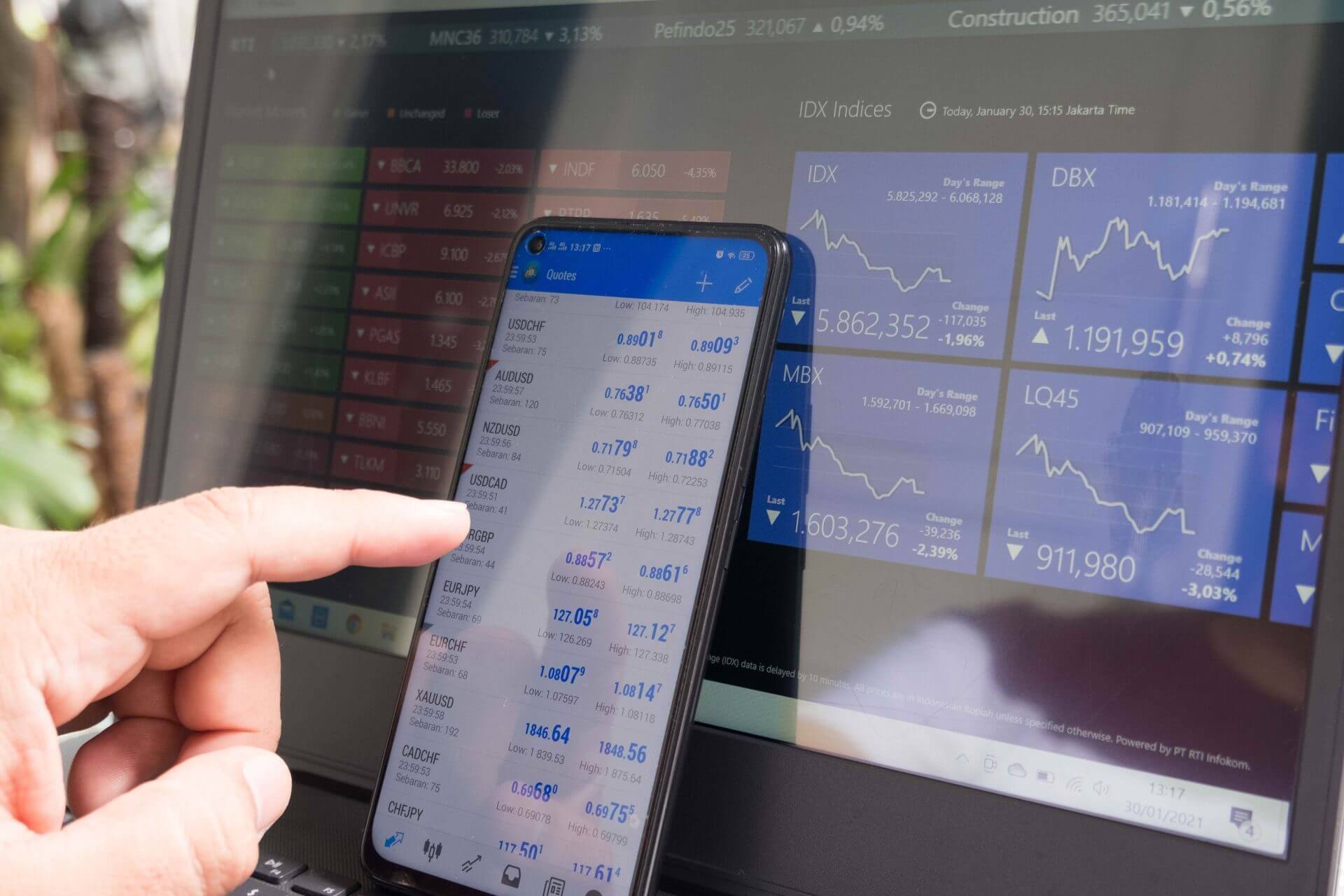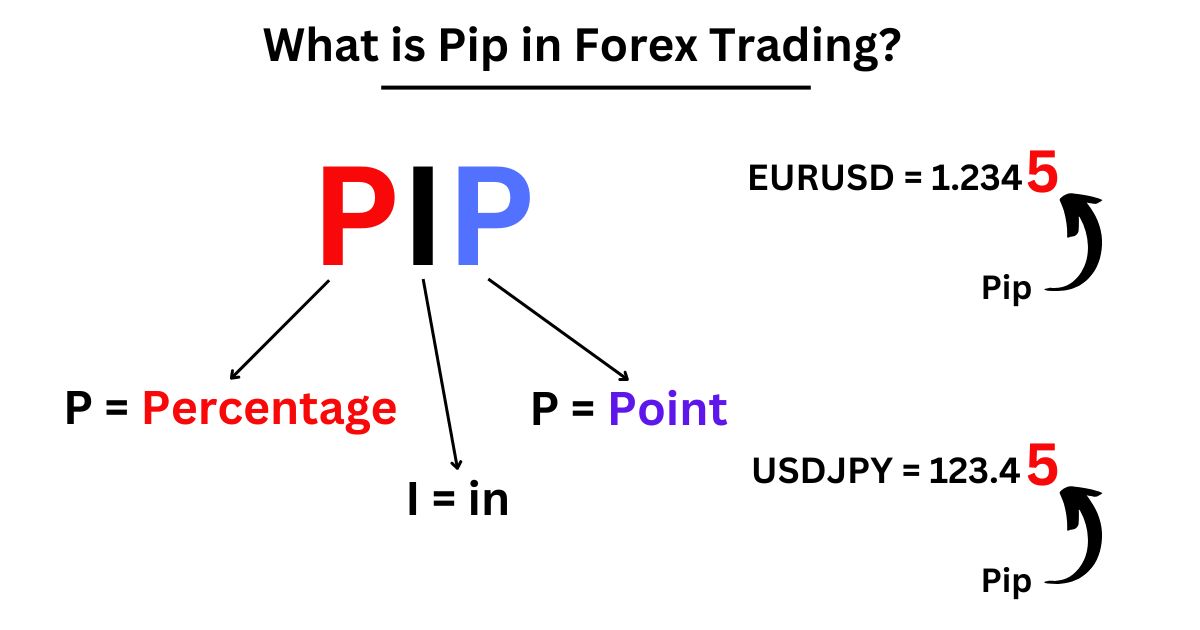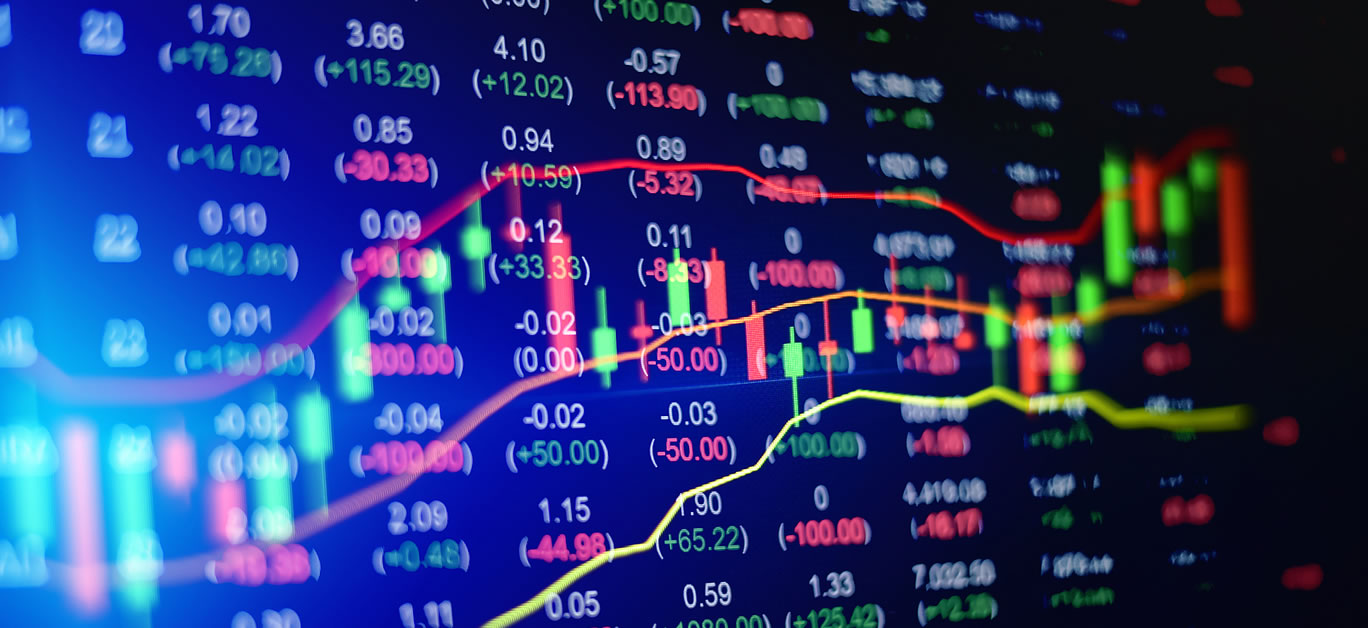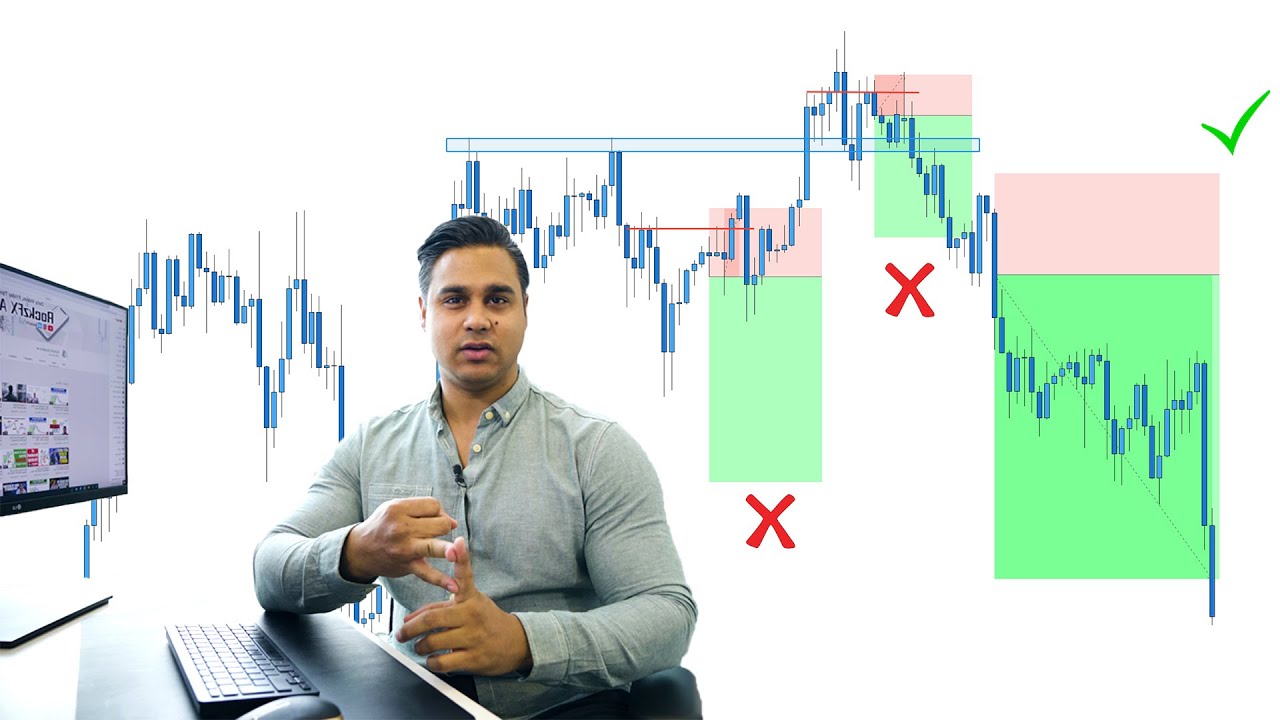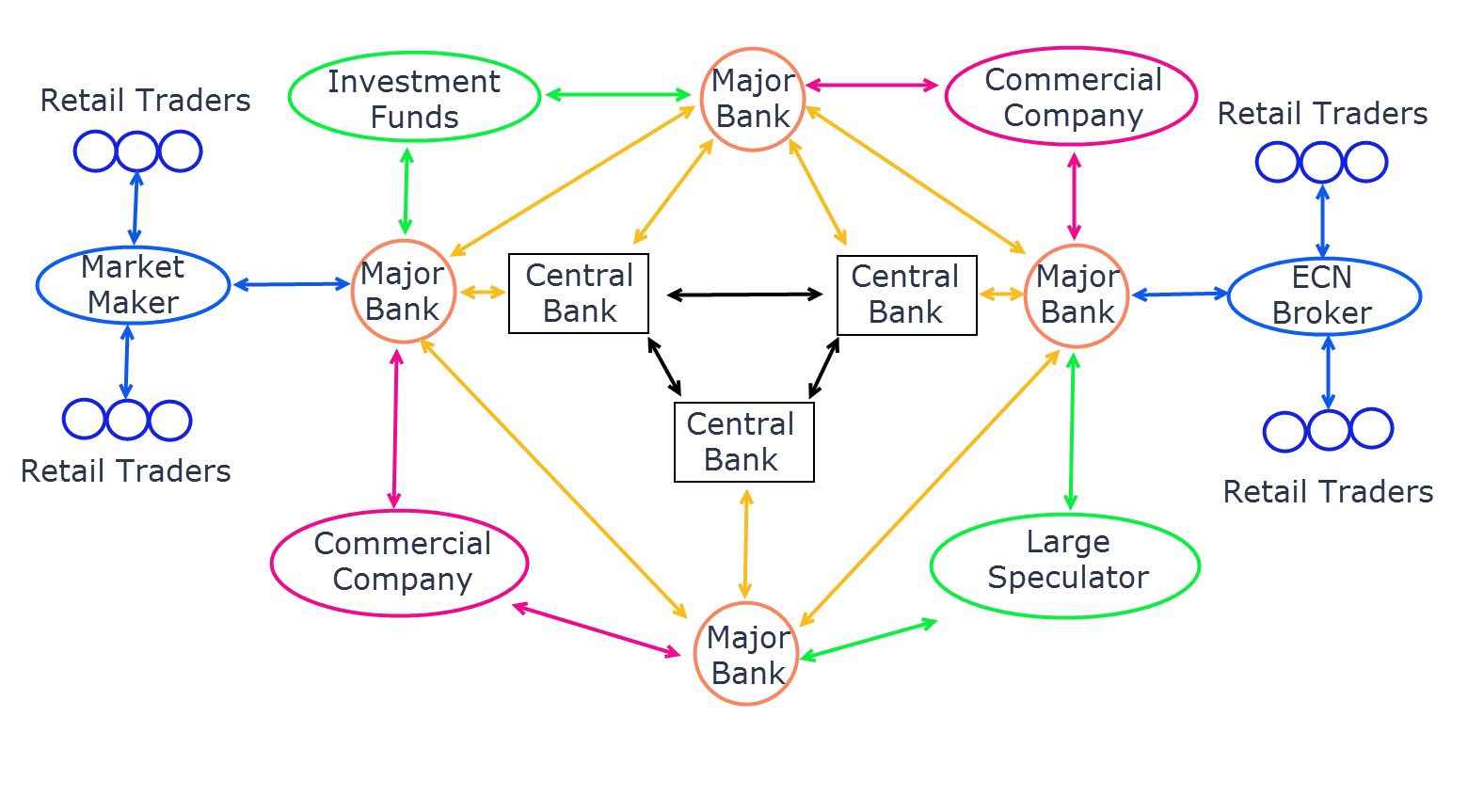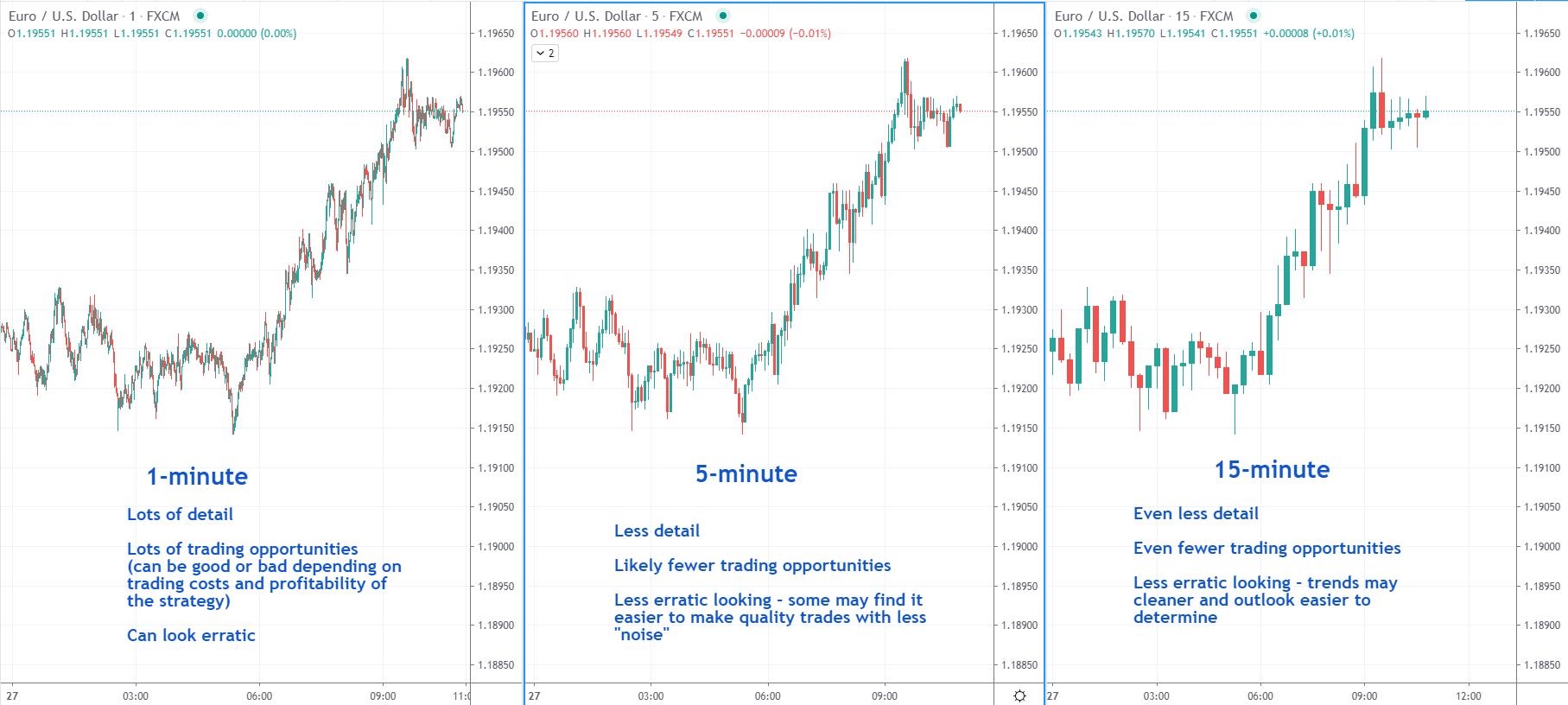Introduction
Forex trading has become increasingly popular in recent years, attracting both novice and experienced traders. This global decentralized market offers numerous opportunities to capitalize on currency fluctuations and generate profit. Perhaps you’ve heard of Forex trading and are intrigued by its potential, or maybe you’re already familiar with the concept and want to delve deeper. Either way, this article will serve as a comprehensive guide to help you get started in the exciting world of Forex trading.
At its core, Forex trading involves the buying and selling of currencies. Unlike other financial markets, Forex operates around the clock, allowing traders to participate at any time and from anywhere in the world. This accessibility and flexibility make it an attractive option for those seeking to diversify their investment portfolios or pursue a full-time trading career.
In this article, we will explore the benefits of Forex trading and provide step-by-step guidance on how to begin your trading journey. We’ll cover essential topics such as choosing a reliable Forex broker, understanding technical and fundamental analysis, developing a trading strategy, managing risks, and more. By the end, you’ll have a solid foundation to start trading and maximize your chances of success.
It’s important to note that Forex trading involves risk, and it’s crucial to approach it with a disciplined mindset and proper education. While the potential for profit is undoubtedly appealing, it’s equally important to understand the inherent risks involved and manage them effectively. By gaining a thorough understanding of the market and adopting the right strategies, you can enhance your trading skills and increase your chances of achieving consistent profitability.
Whether you’re a beginner just starting or an experienced trader looking to refine your skills, this guide will provide valuable insights and resources to support your Forex trading journey. So, let’s dive in and explore the fascinating world of Forex trading, where countless opportunities await those willing to learn and adapt. Remember, success in Forex trading is a continuous learning process, and with dedication and perseverance, you can navigate the market with confidence and achieve your trading goals.
What is Forex Trading?
Forex trading, also known as foreign exchange trading, is the buying and selling of various currencies in the global marketplace. It is the largest financial market in the world, with trillions of dollars traded daily. Unlike other markets, such as stocks or commodities, Forex operates on a decentralized network, allowing traders to engage in currency transactions 24 hours a day, five days a week.
The main participants in the Forex market are banks, financial institutions, corporations, governments, and individual traders. The primary purpose of Forex trading is to profit from the fluctuations in exchange rates between currency pairs. These currency pairs are essentially two different currencies paired together, such as EUR/USD (Euro/US Dollar) or GBP/JPY (British Pound/Japanese Yen).
One of the key features of Forex trading is leverage, which allows traders to control larger positions in the market with only a fraction of the capital. This amplifies both potential profits and losses, making risk management a crucial aspect of successful trading. Traders can place trades with leverage ratios ranging from 1:1 to as high as 500:1, depending on the broker and the jurisdiction.
The Forex market is driven by various factors, including economic indicators, geopolitical events, monetary policies, and investor sentiment. Traders analyze these factors using two main types of analysis: technical analysis and fundamental analysis. Technical analysis involves studying historical price data and patterns to predict future price movements, while fundamental analysis focuses on economic data and news events to assess the intrinsic value of currencies.
Forex traders can speculate on the direction of currency pairs by taking either long (buy) or short (sell) positions. If a trader believes that a currency pair will increase in value, they will buy the pair and profit from the price appreciation. Conversely, if a trader expects a decline in value, they will sell the pair and aim to profit from the price decrease.
To participate in Forex trading, individuals need to open a trading account with a reputable Forex broker. These brokers provide trading platforms that allow traders to execute trades, access real-time market data, and utilize various analytical tools and indicators. It’s important to choose a reliable and regulated broker to ensure the safety of your funds and the integrity of your trades.
In summary, Forex trading is the buying and selling of currency pairs in the global market. It offers traders numerous opportunities to profit from currency fluctuations, leveraging on the constantly changing exchange rates. By understanding the fundamentals of Forex trading and developing effective strategies, individuals can navigate the market with confidence and potentially achieve financial success.
Benefits of Forex Trading
Forex trading offers a wide range of advantages that make it an appealing investment opportunity for individuals and institutions alike. Here are some of the key benefits of Forex trading:
1. Liquidity: The Forex market is highly liquid, meaning that there is a constant flow of buyers and sellers. This ensures that traders can enter and exit positions quickly, even for large trading volumes. The high liquidity also helps to minimize the impact of price manipulation, making the market more transparent and fair.
2. Accessibility: Forex trading is accessible to a wide range of participants. Unlike traditional financial markets, there are no strict requirements or barriers to entry. Traders can start with a relatively small amount of capital and gradually increase their investments over time. Additionally, the market operates 24 hours a day, allowing traders from around the world to participate at their convenience.
3. Flexibility: The Forex market provides traders with flexibility in terms of trading styles and strategies. Whether you prefer short-term day trading or long-term position trading, there are plenty of opportunities to suit your preferences. Moreover, the availability of leverage allows traders to control larger positions with smaller amounts of capital, amplifying potential profits.
4. Diversification: Forex trading allows traders to diversify their investment portfolios. By trading different currency pairs from various economies, traders can spread their risk and potentially mitigate losses. This diversification can help to safeguard against downturns in specific markets and increase the overall stability of your investment portfolio.
5. Profit Potential: Forex trading offers substantial profit potential due to the volatility of currency markets. The constant fluctuations in exchange rates create opportunities for traders to capitalize on price movements and generate profits. With proper analysis and risk management, skilled traders can achieve consistent profitability over time.
6. Transparency: The Forex market is highly transparent compared to other financial markets. Real-time price data, news events, and economic indicators are readily available to traders, enabling them to make informed trading decisions. Additionally, the absence of centralized exchanges reduces the risk of insider trading and market manipulation.
7. Learning Opportunities: Forex trading presents an excellent opportunity for continuous learning and personal development. Traders can improve their trading skills by staying updated with market trends, studying charts and patterns, and refining their trading strategies. The abundance of educational resources, including webinars, tutorials, and online courses, further enhances the learning experience.
While Forex trading offers many benefits, it is important to note that it also carries inherent risks. It is crucial for traders to educate themselves, practice disciplined risk management techniques, and continuously refine their strategies to maximize their chances of success in this dynamic market.
In summary, Forex trading provides several advantages, including liquidity, accessibility, flexibility, diversification, profit potential, transparency, and learning opportunities. By leveraging these benefits and making informed trading decisions, individuals can harness the potential of the Forex market to achieve their financial goals.
Getting Started with Forex Trading
If you’re eager to enter the world of Forex trading, follow these steps to get started on your trading journey:
1. Educate Yourself: Before diving into Forex trading, it’s essential to educate yourself about the market. Learn about basic trading concepts, terminology, and different trading strategies. Familiarize yourself with technical analysis tools, such as candlestick patterns, support and resistance levels, and trend lines. Additionally, gain an understanding of fundamental analysis and how economic indicators impact currency prices.
2. Define Your Trading Goals: Clarify your trading goals, whether it’s generating additional income, achieving financial independence, or simply acquiring new skills. Setting clear goals will help guide your trading decisions and keep you focused and motivated throughout your journey.
3. Choose a Reliable Forex Broker: Selecting the right Forex broker is crucial for a successful trading experience. Look for a broker that is regulated, offers a user-friendly trading platform, competitive spreads, and reliable customer support. Ensure that the broker provides access to a wide range of tradable currency pairs and offers secure and efficient payment methods.
4. Open a Demo Account: Most reputable Forex brokers offer demo accounts that allow traders to practice trading without risking real money. Utilize this valuable resource to familiarize yourself with the trading platform, test different strategies, and gain confidence in your trading abilities.
5. Develop a Trading Strategy: A trading strategy provides a set of rules and guidelines to follow when entering and exiting trades. It helps you make objective trading decisions based on analysis rather than emotions. Define your entry and exit criteria, risk management techniques, and the timeframe you will trade. Regularly evaluate and adjust your strategy as needed.
6. Start with Small Positions: When you begin trading with real money, start with small positions to limit your risk. Avoid the temptation to trade large amounts without sufficient experience. As you gain confidence and understand the market dynamics better, you can gradually increase your position size.
7. Practice Risk Management: Managing risk is crucial in Forex trading. Use stop-loss orders to limit potential losses and protect your capital. Determine your risk tolerance and never risk more than you can afford to lose. Employ proper position sizing techniques to ensure that individual trades do not significantly impact your overall account balance.
8. Keep Learning and Adapting: Forex markets are dynamic and constantly changing. Stay updated with market news, economic events, and political developments. Continuously improve your skills by reading educational resources, attending webinars, and learning from experienced traders. Adapt your trading strategies to align with current market conditions.
9. Maintain Emotional Discipline: Emotions can interfere with rational decision-making in trading. Overcome the temptation to chase losses or make impulsive trades based on fear or greed. Stick to your trading plan and remain disciplined, regardless of market fluctuations.
Remember, Forex trading is a journey that takes time, practice, and continuous learning. Be patient and persistent, and don’t be discouraged by initial losses. With proper education, a well-defined strategy, and disciplined execution, you can achieve success in Forex trading. Start small, manage risks effectively, and aim for consistent profitability.
Choosing a Reliable Forex Broker
Selecting a reliable Forex broker is a crucial step in your trading journey, as it can greatly impact your trading experience and overall success. Here are some key factors to consider when choosing a Forex broker:
1. Regulation and Security: Ensure that the broker you choose is regulated by a reputable regulatory authority. Regulation helps to protect your funds and ensures that the broker operates in a fair and transparent manner. Look for brokers regulated by recognized authorities such as the Financial Conduct Authority (FCA) in the UK, the Australian Securities and Investments Commission (ASIC), or the Cyprus Securities and Exchange Commission (CySEC). Additionally, check if the broker offers account segregation, which keeps client funds separate from the broker’s own funds for added security.
2. Trading Platform: Evaluate the trading platform offered by the broker. It should be user-friendly, stable, and provide access to a comprehensive range of technical analysis tools and indicators. Test the platform’s speed and functionality in a demo account to ensure it meets your needs.
3. Tradable Instruments: Consider the variety of tradable instruments offered by the broker. While Forex trading focuses on currency pairs, having access to other markets such as commodities, indices, or cryptocurrencies can provide additional trading opportunities and diversification.
4. Spreads and Fees: Compare the spreads and commissions charged by different brokers. Tighter spreads translate to lower trading costs, especially for frequently traded currency pairs. Be aware of any hidden fees or charges that may impact your trading profitability.
5. Customer Support: Assess the quality and responsiveness of customer support offered by the broker. Reliable and efficient customer support is crucial, especially when you encounter technical issues or have questions about your trading account. Test their support channels, such as live chat, phone, or email, to ensure prompt assistance.
6. Execution and Slippage: Look for a broker that offers fast and reliable order execution with minimal slippage. Efficient order execution is essential to capture optimal entry and exit points and avoid significant price discrepancies.
7. Educational Resources: Consider whether the broker provides educational resources and support for traders. This can include webinars, tutorials, market analysis, and trading tools. A broker that invests in its clients’ education demonstrates a commitment to their success.
8. Account Types: Evaluate the different account types offered by the broker. Look for options that align with your trading goals, risk tolerance, and initial deposit amount. Some brokers may offer different account tiers with varying features and benefits.
9. Payment Methods: Check the availability and efficiency of payment methods offered by the broker. Look for options that are convenient for you and offer secure transactions. Consider factors such as deposit and withdrawal processing times and any associated fees.
10. Reputation and Reviews: Research and read reviews about the broker from reputable sources and fellow traders. This can provide insights into the broker’s track record, customer satisfaction levels, and overall reputation in the industry.
Choosing a reliable Forex broker is a critical decision that will impact your trading journey. By considering these factors and conducting thorough research, you can select a broker that aligns with your trading needs and provides a secure and supportive trading environment. Remember, the right broker can enhance your trading experience and contribute to your long-term success in Forex trading.
Understanding Technical and Fundamental Analysis
To navigate the Forex market successfully, it is important to understand two key approaches to market analysis: technical analysis and fundamental analysis. Each method offers valuable insights into currency price movements and can help you make informed trading decisions.
Technical Analysis:
Technical analysis involves studying historical price data and using various tools and indicators to identify patterns and trends. By analyzing price charts, traders attempt to predict future price movements based on past market behavior. Here are some key concepts and tools used in technical analysis:
1. Support and Resistance: Support levels are price levels where buying pressure is expected to prevent further price declines, while resistance levels are price levels where selling pressure is expected to prevent further price increases. Traders use these levels to identify potential entry and exit points.
2. Trend Lines: Trend lines are lines drawn on a price chart to connect higher lows in an uptrend or lower highs in a downtrend. They provide valuable information about the overall direction of the market and can be used to identify potential trend reversals.
3. Candlestick Patterns: Candlestick patterns provide insights into market sentiment. Patterns such as dojis, engulfing patterns, and hammers can indicate potential reversals or continuation of trends.
4. Indicators: There are various technical indicators, such as moving averages, relative strength index (RSI), and stochastic oscillators, that help traders analyze market conditions and identify potential entry and exit signals.
Fundamental Analysis:
Fundamental analysis involves analyzing economic, political, and social factors that can impact currency prices. Traders who use fundamental analysis assess economic indicators, news events, and geopolitical developments to evaluate the intrinsic value of currencies. Here are key elements of fundamental analysis:
1. Economic Indicators: Economic indicators, such as GDP growth rate, inflation, interest rates, employment data, and trade balances, provide insights into the economic health of a country. Traders analyze these indicators to assess the strength or weakness of a currency.
2. News Events: Important news events, such as central bank announcements, geopolitical developments, and major economic releases, can significantly impact currency prices. Traders closely monitor these events and assess their potential impact on the market.
3. Monetary Policy: Central bank decisions regarding interest rates and other monetary policy measures can impact currency values. Traders analyze central bank statements and policies to understand future market trends.
It is important to note that technical analysis and fundamental analysis are not mutually exclusive. Many traders use a combination of both approaches to obtain a comprehensive view of the market. While technical analysis focuses on price patterns and chart analysis, fundamental analysis provides insights into the underlying factors driving market movements.
Successful traders develop a trading strategy that integrates technical and fundamental analysis. They make trading decisions based on a combination of these approaches, considering both short-term price movements identified through technical analysis and long-term trends based on fundamental factors.
By understanding and applying these analysis techniques, you can improve your ability to interpret market movements and appropriately respond with effective trading strategies. It is a continuous learning process, and with practice and experience, you will develop the skills necessary to succeed in Forex trading.
Developing a Trading Strategy
A well-defined trading strategy is crucial for success in Forex trading. It provides a structured approach to decision-making and helps to manage risk effectively. Here are key steps to develop your trading strategy:
1. Define Your Goals and Risk Tolerance:
Start by setting clear trading goals and establishing your risk tolerance. Determine how much capital you are willing to risk per trade and establish a maximum drawdown limit. This will help you determine the appropriate position sizing and risk management techniques to incorporate into your strategy.
2. Choose a Trading Style:
Consider your trading style and time commitment. Are you more inclined towards day trading, swing trading, or long-term position trading? Each style has its own advantages and requires different analysis techniques. Aligning your trading style with your personality and lifestyle will enhance your consistency and enjoyment in trading.
3. Select Technical Analysis Tools:
Identify the technical analysis tools and indicators that resonate with your trading style. This may include moving averages, trend lines, support and resistance levels, oscillators, or chart patterns. Use these tools to identify entry and exit points, confirm trends, and manage risk.
4. Determine Entry and Exit Criteria:
Define specific criteria for entering and exiting trades based on your technical analysis. This could be a break of a particular support or resistance level, a confirmation from multiple indicators, or a specific candlestick pattern. Use these criteria to ensure your trades are based on objective analysis rather than emotions.
5. Implement Risk Management Techniques:
Incorporate risk management techniques into your trading strategy. This may include setting stop-loss orders to limit potential losses, trailing stop orders to secure profits, or scaling in and out of positions to manage risk and maximize gains. An effective risk management plan is vital in preserving capital and safeguarding your trading account.
6. Backtest and Evaluate:
Backtest your trading strategy on historical data to assess its performance under different market conditions. This will help you identify strengths and weaknesses in the strategy and make any necessary adjustments. Keep a trading journal to record your trades and analyze your performance over time.
7. Monitor and Adapt:
Continuously monitor the performance of your trading strategy and make adjustments as needed. Market conditions can change, and what worked in the past may not work in the future. Stay updated with market trends and reassess your strategy regularly to ensure it remains relevant and effective.
8. Stick to Your Plan:
Once you have developed your trading strategy, commit to following it consistently. Avoid impulsive decisions based on emotions or reacting to short-term market fluctuations. Discipline and adherence to your strategy will help you avoid costly mistakes and maintain a disciplined approach to trading.
Remember that no trading strategy is foolproof, and losses are a part of trading. The key is to have a strategy that provides a statistical edge over time and to remain disciplined in executing your trades. Continually refine and improve your strategy based on your experience and market conditions.
Developing a trading strategy is a continuous learning process. Regularly educate yourself, keep up with market trends, and seek feedback from experienced traders. With time and practice, you can develop a strategy that suits your trading style, risk tolerance, and financial goals, increasing your chances of success in Forex trading.
Managing Risk in Forex Trading
Managing risk is an essential component of successful Forex trading. By implementing effective risk management techniques, you can protect your trading capital, minimize losses, and increase your chances of long-term profitability. Here are key strategies for managing risk in Forex trading:
1. Determine Risk Tolerance: Assess your risk tolerance and establish the maximum amount of capital you are willing to risk per trade and overall in your trading account. This will help you determine appropriate position sizing and set realistic profit targets. It’s important to only risk what you can afford to lose.
2. Utilize Stop-Loss Orders: Implementing stop-loss orders is crucial in managing risk. A stop-loss order is placed at a predetermined price level, and if reached, it automatically closes the trade to limit potential losses. Set your stop-loss orders based on your analysis and risk tolerance, ensuring they are placed at a level that allows for normal market fluctuations without being too tight to avoid premature exits.
3. Implement Trailing Stops: Trailing stops can be used to protect profits as the trade moves in your favor. A trailing stop order adjusts your stop-loss level as the price moves in your favor, locking in profits while still allowing for potential further price increases. This technique helps to protect gains and allows you to ride the trend for longer.
4. Use Proper Position Sizing: Determine the appropriate position size for each trade based on your risk tolerance and stop-loss level. Avoid risking too much of your trading capital on a single trade, as this increases the potential for significant losses. The general rule of thumb is to risk no more than 1-2% of your trading account balance on any given trade.
5. Diversify Your Portfolio: Spread your risk by diversifying your trading portfolio. Instead of focusing on a single currency pair or market, consider trading multiple pairs or instruments. Diversification helps to reduce the impact of a single trade or market event on your overall account balance.
6. Avoid Overtrading: Overtrading, or excessive trading, can lead to impulsive decisions based on emotions rather than analysis. Stick to your trading strategy and avoid taking trades that do not meet your predefined criteria. Impulsive trading often results in unnecessary losses and can derail your risk management efforts.
7. Monitor and Adjust Risk: Regularly review and assess your risk management strategy. Monitor the performance of your trades and analyze if there are areas where you can improve risk management. Adapt your risk management approach as needed, taking into consideration factors such as market volatility, account balance, and trading experience.
8. Continuous Learning and Evaluation: Forex markets are dynamic and require continuous learning and evaluation. Stay updated with market trends, refine your trading strategies, and never stop expanding your knowledge. Investing in your trading education and keeping up with market developments will help you make more informed decisions and manage risk effectively.
Remember, managing risk is about preserving capital and protecting yourself against substantial losses. No trading strategy is perfect, and losses are an inherent part of trading. By implementing proper risk management techniques, you establish a solid foundation to navigate the Forex market with discipline and consistency.
By setting realistic expectations, utilizing stop-loss orders, employing proper position sizing, and continuously evaluating and adjusting your risk management approach, you can effectively manage risk and increase your chances of long-term success in Forex trading.
Types of Forex Orders
In Forex trading, various types of orders can be used to enter or exit positions in the market. Understanding the different order types is important for executing trades according to your trading strategy and managing risk effectively. Here are the common types of Forex orders:
1. Market Order: A market order is the most basic and commonly used order type. It is executed at the current market price, ensuring immediate execution. When you place a market order, you are buying or selling a currency pair at the prevailing market price. It is important to note that the actual execution price may slightly vary from the price shown on the trading platform due to slippage.
2. Limit Order: A limit order is an order to buy or sell a currency pair at a specific price or better. It allows you to set a specific entry or exit point at which you want your trade to be executed. A buy limit order is placed below the current market price, while a sell limit order is placed above the current market price. Once the specified price is reached, the limit order is executed. Limit orders are useful for traders who want to enter a trade at a more favorable price than the current market price.
3. Stop Order: A stop order, also known as a stop loss order, is used to limit losses or protect profits by triggering a market order when a specific price level is reached. A buy stop order is placed above the current market price, while a sell stop order is placed below the current market price. For example, if you are in a long position and you want to limit your potential losses, you can place a sell stop order below the market price. If the market reaches that price, the order becomes a market sell order, helping you to exit the trade and limit your losses.
4. Stop-Limit Order: A stop-limit order combines the features of both a stop order and a limit order. It includes a stop price and a limit price. When the stop price is reached, a limit order is triggered at the specified limit price or better. This type of order allows traders to have more control over the execution price but carries the risk of the limit order not being filled if the market moves rapidly.
5. Trailing Stop Order: A trailing stop order is a dynamic stop order that adjusts automatically as the market price moves in your favor. It is designed to protect profits by allowing you to capture gains while still giving the trade room to breathe. If the market moves in the direction of your trade, the trailing stop order will adjust, trailing the market price at a specific distance. However, if the market reverses and reaches the trailing stop level, the trade will be closed, locking in your profits.
Understanding and effectively using these order types is crucial for executing trades according to your trading strategy and managing risk. Depending on your trading style and market conditions, certain types of orders may be more appropriate than others. It is important to practice using different order types in a demo account before executing them in live trading to familiarize yourself with their functionality and potential impact on your trades.
By utilizing the various Forex order types, you can enter and exit positions with precision and efficiency, enabling you to seize opportunities and manage your risk effectively in the dynamic Forex market.
Demo Trading and Backtesting
Demo trading and backtesting are essential tools for Forex traders to develop and refine their trading strategies without risking real money. These practices allow traders to gain valuable experience, test their strategies, and evaluate their potential performance in a simulated environment. Here’s an overview of demo trading and backtesting:
1. Demo Trading:
Demo trading involves trading in a simulated environment using virtual funds, often provided by the broker. It allows traders to experience the real-time market conditions and practice executing trades without any financial risk. Here are the benefits of demo trading:
a. Practice: Demo trading provides an opportunity to practice trading strategies in a risk-free environment. It allows you to become familiar with the trading platform, test different order types, and analyze the market using real-time data.
b. Strategy Development: Demo trading helps traders to develop and refine their trading strategies. By testing different approaches and analyzing the outcomes, traders can gain insights into the effectiveness of their strategies and make necessary adjustments.
c. Confidence Building: Demo trading can help build confidence in your trading skills. It allows you to understand how the market moves, how your strategy performs, and how you respond to different market conditions, all without the pressure of real financial losses.
d. Market Familiarization: Demo trading enables traders to familiarize themselves with various currency pairs, market dynamics, and market hours. It helps to develop a better understanding of market trends, volatility, and liquidity.
While demo trading provides a valuable learning experience, it’s important to remember that there can be psychological differences when trading with real money. Emotional discipline and risk management are essential aspects that can only truly be tested in live trading.
2. Backtesting:
Backtesting involves evaluating your trading strategy using historical price data to assess its performance. Traders analyze past data to simulate trades and determine how well their strategy would have performed in different market conditions. Here are the benefits of backtesting:
a. Strategy Evaluation: Backtesting allows traders to evaluate the performance of their trading strategies over time. It helps to identify the strengths and weaknesses of the strategy, assess risk-reward ratios, and determine profitability under various conditions.
b. Optimization: Backtesting helps in optimizing trading parameters by analyzing different indicators or entry and exit rules. Traders can fine-tune their strategies based on the results of backtesting and improve their trading approach.
c. Confidence Building: Backtesting provides traders with confidence in their strategy by showing historical evidence of its performance. This confidence can enhance discipline and consistency when executing trades.
d. Risk Management: Backtesting enables the evaluation of risk management techniques within the strategy. Traders can determine the impact of different position sizing, stop-loss levels, and risk-reward ratios, ensuring they align with their risk tolerance and overall trading goals.
Remember that while backtesting can provide valuable insights, it is important to acknowledge that past performance does not guarantee future results. Market conditions can change, and it’s essential to adapt strategies accordingly.
Utilizing demo trading and backtesting can help traders gain experience, refine strategies, evaluate performance, and build confidence. These practices are vital in developing a solid foundation before transitioning to live trading. They offer valuable opportunities to learn and grow as a trader, increasing the likelihood of consistent profitability in the long run.
Opening a Live Forex Trading Account
Once you have practiced and gained confidence in demo trading, you may be ready to open a live Forex trading account. Opening a live account allows you to trade with real money and profit from the opportunities in the Forex market. Here are the steps to open a live Forex trading account:
1. Research and Choose a Forex Broker:
Research and compare different Forex brokers to find a reputable and regulated broker that suits your trading needs. Consider factors such as regulatory compliance, trading platform reliability, customer support, spreads, fees, and available currency pairs. Read reviews and seek recommendations from experienced traders to make an informed decision.
2. Complete the Account Opening Process:
Visit the chosen broker’s website and navigate to the account opening section. Fill out the necessary registration form, providing accurate personal information. You may also be required to submit identification documents, such as a passport or national ID card, as part of the Know Your Customer (KYC) process.
3. Select the Account Type:
Choose the appropriate account type that aligns with your trading goals and risk tolerance. Most brokers offer different account tiers with varying features, minimum deposit requirements, and leverage options. Consider factors such as spreads, commission fees, and available trading tools when selecting the account type.
4. Deposit Funds into Your Account:
Once your account is approved, fund your trading account by depositing the required minimum amount specified by the broker. Brokers offer various payment methods, including bank wire transfers, credit/debit cards, and online payment processors. Choose the method that is convenient and secure for you.
5. Familiarize Yourself with the Trading Platform:
After depositing funds, download and install the trading platform provided by the broker. Take the time to familiarize yourself with the platform’s functionality, features, and order execution process. Explore the available tools and indicators that can enhance your trading experience.
6. Develop or Refine Your Trading Strategy:
Before placing trades with real money, revisit and refine your trading strategy based on market conditions and the insights gained from your demo trading experience. Ensure your strategy includes risk management techniques, entry and exit criteria, and a clear understanding of your risk-reward ratio.
7. Start Trading:
With funds in your live trading account and a well-defined strategy, you are ready to start trading. Execute trades based on your analysis and follow your predefined risk management protocols. Start with small position sizes and gradually increase them as you gain experience and confidence.
8. Monitor and Evaluate Your Trades:
Regularly monitor your trades and analyze their performance. Keep a trading journal to record all your trades, including entry and exit points, results, and any adjustments made to your strategy. Periodically review your trades to identify areas for improvement and adjust your approach accordingly.
It’s important to approach live trading with caution and patience. Do not rush into making impulsive decisions or risk more than you can afford to lose. Forex trading involves risks, and managing them effectively is essential for long-term success.
Opening a live Forex trading account is an exciting step towards participating in the real-time Forex market. With proper preparation, knowledge, and a disciplined approach, you can navigate the Forex market with confidence and potentially achieve your trading goals.
Basic Forex Trading Concepts
Understanding the basic concepts of Forex trading is essential for new traders to navigate the market successfully. Here are some fundamental concepts that every Forex trader should know:
1. Currency Pairs: Forex trading involves the simultaneous buying of one currency and selling of another. Currency pairs are quoted in the form of a base currency and a quote currency. For example, in the EUR/USD pair, the Euro (EUR) is the base currency, and the US Dollar (USD) is the quote currency. The exchange rate between the two currencies represents how much of the quote currency is needed to buy one unit of the base currency.
2. Bid and Ask Price: In any currency pair, there are two prices – the bid price and the ask price. The bid price is the price at which the market is willing to buy the base currency, while the ask price is the price at which the market is willing to sell the base currency. The difference between the bid and ask price is known as the spread, and it represents the transaction cost.
3. Pips and Lots: A pip is the smallest unit of measurement in Forex trading and stands for “percentage in point”. It represents the fourth decimal place in most currency pairs, except for those involving the Japanese Yen, where it represents the second decimal place. Lots refer to the trade size, with standard lots being 100,000 units of the base currency. Trading in smaller sizes such as mini lots (10,000 units) or micro lots (1,000 units) is also common.
4. Long and Short Positions: In Forex trading, you can take either a long or a short position. Going long means buying a currency pair with the expectation that its value will rise, aiming to sell it at a higher price to make a profit. Going short means selling a currency pair with the expectation that its value will decline, aiming to buy it back at a lower price to profit from the price decrease.
5. Leverage: Leverage allows traders to control larger positions with smaller amounts of capital. It is expressed as a ratio, such as 1:50 or 1:100. For example, a leverage ratio of 1:50 means that for every $1 in your trading account, you can control a position worth $50. While leverage can amplify potential profits, it also increases the risk of losses, so it should be used with caution.
6. Margin: Margin is the amount of money required to open and maintain a leveraged position. It is a percentage of the total position value and acts as collateral for potential losses. Margin requirements vary depending on the broker and the leverage ratio chosen. It is essential to monitor margin levels to avoid margin calls, which occur when the account balance falls below the required margin level, potentially leading to the closure of trades.
7. Spread and Commission: Forex brokers earn profits through spreads and commissions. The spread is the difference between the bid and ask price and represents the broker’s fee. Some brokers charge a commission per trade in addition to the spread. It’s important to consider both the spread and any commissions when evaluating the cost of trading with a particular broker.
Understanding these basic concepts lays the foundation for further learning and growth in Forex trading. As you gain experience and knowledge, you can delve into more advanced concepts and strategies. Remember to continue educating yourself and practicing disciplined risk management to navigate the Forex market with confidence and achieve your trading goals.
Common Forex Trading Mistakes to Avoid
Forex trading offers immense potential for profit and personal growth, but it also comes with risks. To increase your chances of success, it’s important to be aware of and avoid common Forex trading mistakes. Here are some pitfalls to watch out for:
1. Lack of Education: One of the biggest mistakes new traders make is diving into Forex trading without sufficient education. It’s essential to invest time and effort in learning the fundamentals of Forex trading, including market analysis, risk management, and trading strategies. Without a solid understanding of the market, traders are more likely to make costly errors.
2. Emotional Trading: Allowing emotions to drive trading decisions is a recipe for disaster. Fear, greed, and impatience can lead to impulsive trading, chasing losses, or prematurely closing profitable trades. It’s crucial to maintain emotional discipline, stick to your trading plan, and make decisions based on analysis rather than impulse.
3. Overtrading: Overtrading is a common mistake, especially for beginners. Opening too many positions or trading too frequently can lead to a lack of focus, overexposure to risk, and increased transaction costs. It’s important to be selective and patient when choosing trades, focusing on high-quality setups that align with your trading strategy.
4. Not Using Stop-Loss Orders: Failing to use stop-loss orders is a significant risk. Stop-loss orders help to limit potential losses by automatically closing a trade at a predetermined price. By not implementing stop-loss orders, traders expose themselves to the risk of substantial losses if the market moves against their position. Always include stop-loss orders in your trading strategy to protect your capital.
5. Revenge Trading: Revenge trading is a dangerous habit that occurs after a loss. It involves taking impulsive trades to recover losses out of frustration or anger. This mindset can lead to further losses, as emotions take precedence over rational analysis. It’s important to accept losses as part of trading and maintain discipline by sticking to your strategy.
6. Neglecting Risk Management: Proper risk management is critical in Forex trading. Neglecting to set appropriate position sizes, using excessive leverage, or not adhering to risk management principles can result in significant losses. Always calculate and manage your risk-reward ratios, set realistic profit targets, and use appropriate position sizing techniques to protect your trading capital.
7. Neglecting Fundamental Analysis: Many traders solely rely on technical analysis and overlook the importance of fundamental analysis. Ignoring economic indicators, news events, and market sentiment can lead to missed opportunities, as fundamental factors can significantly impact currency prices. Incorporate both technical and fundamental analysis into your trading strategy for a comprehensive view of the market.
8. Failure to Adapt: The Forex market is dynamic and constantly evolving. Failing to adapt to changing market conditions can hinder your trading performance. It’s important to stay updated with market news, adjust strategies when necessary, and continuously learn and improve your trading skills.
By being mindful of these common Forex trading mistakes and taking proactive steps to avoid them, you can enhance your trading performance and increase your chances of success. Remember, Forex trading is a journey of continuous learning and improvement. Embrace the challenges, learn from your mistakes, and remain disciplined in your approach.
Recommended Resources for Forex Traders
Forex trading is a dynamic and constantly evolving market, and staying informed and educated is crucial to success. Fortunately, there are numerous resources available to help Forex traders enhance their knowledge, develop their skills, and stay updated with market trends. Here are some recommended resources for Forex traders:
1. Forex Education Websites: Several websites offer comprehensive educational materials, tutorials, articles, and eBooks on Forex trading. Websites like BabyPips, Investopedia, and ForexFactory provide valuable resources for beginners and experienced traders alike. These resources cover a wide range of topics, including technical analysis, fundamental analysis, risk management, and trading strategies.
2. Trading Books: Many successful traders have shared their knowledge and experience in the form of books. Books such as “Trading in the Zone” by Mark Douglas, “Japanese Candlestick Charting Techniques” by Steve Nison, and “The Little Book of Currency Trading” by Kathy Lien offer insights into trading psychology, technical analysis, and trading strategies. Reading these books can provide valuable perspectives and help you refine your approach to Forex trading.
3. Webinars and Online Courses: Webinars and online courses provide interactive learning experiences and allow you to learn from industry experts. Companies like DailyFX, Forex.com, and FXCM offer free webinars covering various aspects of Forex trading. Additionally, platforms like Udemy and Coursera offer paid online courses taught by professionals, covering a wide range of Forex trading topics.
4. Economic Calendars: Economic calendars provide important information about upcoming economic events, such as central bank announcements, economic releases, and political events. Websites like ForexFactory and Investing.com offer comprehensive economic calendars that traders can use to stay updated with major market-moving events. By being aware of these events, you can adjust your trading strategy and manage your risk effectively.
5. Forums and Online Communities: Engaging with other traders through forums and online communities can provide valuable insights and trading ideas. Websites like Forex Peace Army and BabyPips have active forums where traders share their experiences, strategies, and analysis. Joining these communities can provide opportunities to learn from experienced traders and discuss market trends with like-minded individuals.
6. Financial News Websites: Staying informed about global economic and financial news is essential for Forex traders. Websites like Bloomberg, CNBC, and Reuters offer up-to-date news, analysis, and market commentary. Following reputable financial news sources can help you understand how global events impact currency markets and make informed trading decisions.
7. Professional Analysis Services: Subscribing to professional analysis services can provide valuable insights and save time on market research. Companies like DailyFX and ForexLive offer real-time analysis, market commentary, and trade ideas. These services often include technical analysis, fundamental analysis, and macroeconomic research that can assist you in making trading decisions.
Remember to critically evaluate the resources you use and consider multiple perspectives. Not all information may be accurate or suitable for your trading style or risk tolerance. Continuously refine your skills, stay informed, and adapt your strategies as you gain experience and knowledge in the dynamic Forex market.
By utilizing these recommended resources, you can enhance your understanding of Forex trading, refine your trading strategies, and stay well-informed about market developments. Education and continuous learning are essential for staying ahead in the competitive world of Forex trading.
Conclusion
Forex trading offers immense potential for individuals to generate income, achieve financial independence, and pursue a fulfilling trading career. However, success in Forex trading requires a combination of knowledge, skill development, patience, and discipline. Throughout this guide, we have covered various aspects of Forex trading, including understanding the market, choosing a broker, analyzing the market, developing a trading strategy, managing risk, and utilizing recommended resources.
It’s important to remember that Forex trading is not a get-rich-quick scheme. It requires continuous learning, practice, and adaptability. It is crucial to approach trading with a structured mindset, using proper risk management techniques and realistic expectations.
As you embark on your Forex trading journey, remember the following key points:
1. Education: Continuously educate yourself about the Forex market, trading strategies, risk management, and analysis techniques. Stay updated with market trends and changes that may impact currency prices.
2. Practice: Utilize demo accounts and backtesting to practice and refine your trading strategies without risking real money. Gain experience and confidence in your trading abilities before transitioning to live trading.
3. Risk Management: Implement effective risk management techniques, including the use of stop-loss orders, proper position sizing, and disciplined trading. Always protect your trading capital and avoid overexposure to risk.
4. Discipline: Maintain emotional discipline and stick to your trading plan. Avoid impulsive decisions driven by fear or greed. Consistency and patience are key virtues in Forex trading.
5. Continuous Improvement: Embrace a growth mindset and strive for continuous improvement. Learn from your mistakes, analyze your trades, and adapt your strategies as needed. Keep refining your skills to stay ahead in the ever-changing Forex market.
By incorporating these principles into your trading journey and dedicating yourself to continuous learning and improvement, you can increase your chances of achieving success in Forex trading.
Remember that Forex trading involves risks, and there are no guaranteed profits. It is crucial to trade responsibly, only risk what you can afford to lose, and seek professional advice when needed.
With dedication, perseverance, and a strong foundation of knowledge, you have the potential to navigate the Forex market with confidence and achieve your trading goals. Best of luck on your Forex trading journey!









